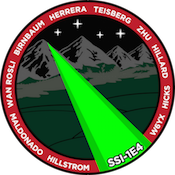Optical Communications Team

Optical Communications is a student-led project that aims to develop the capability to establish high-bandwidth data links over free space. The group began work at the beginning of the 2014-2015 academic year, under the leadership of Thomas Teisberg and Logan Herrera. It was initially formed to investigate the possibility of space-based optical communications, with the intent to participate in the NASA CubeQuest Challenge, a competition for small satellite design, but has since moved away from the competition design constraints. The OpComms/Satellites Team Faculty Advisor is Dr. Simone D'Amico.
Since its inception, the Optical Communications group has evolved to focus on the establishment of long-distance optical links, with the eventual goal of integrating this technology into a CubeSat form-factor satellite for the purposes of space-based communication. In its first year of existence, the group developed a system involving mechanized altitude/azimuth mounts, an original receiver device consisting of a Fresnel lens and photodetector, and a MATLAB pointing algorithm based on reference point alignment. The group’s final test of the 2014-15 year resulted in the successful establishment of an optical lock over 10 kilometers.